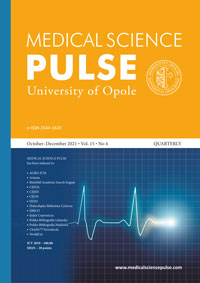Identification of Escherichia coli strains in the vaginal cultures of healthy women and their patterns of antibiotic resistance
Identification of Escherichia coli strains in the vaginal cultures of healthy women and their patterns of antibiotic resistance
Author(s): Jorge Angel Almeida Villegas, Harold Mondragon Reyes, Maria Fernanda Cruz Rosas, Regina Sanchez Monroy, Jesus Emmanuel Bernal Zamudio, Ana Paula Palacios RodriguezSubject(s): Health and medicine and law
Published by: Uniwersytet Opolski
Keywords: E. coli; antibiotic resistance; vaginal culture
Summary/Abstract: Background: Bacterial vaginosis is the most common cause of vaginitis in women of childbearing age, andit predominantly affects young sexually active women. Escherichia coli is one of the most common bacteriafound in the genital tract of non-pregnant (9–28%) and pregnant women (24–31%). E. coli strains can colonize the vaginal and endocervical regions in pregnant women, and may lead to the development of urinarytract, intra-amniotic or puerperal infections.Aim of the study: Isolation and identification of the antibiotic resistance patterns of extended spectrumbeta-lactamase (ESBL)-producing and non-producing E. coli in the vaginal cultures of healthy women.Material and methods: Vaginal samples were taken from 55 healthy women. For the bacterial identificationand resistance patterns, automated equipment from Beckman Coulter was used. Phenotypic techniques wereused to confirm the presence or absence of ESBL.Results: Fifty-five cultures developed E. coli, with the rest of the strains corresponding to different bacteria.Of the 55 E. coli cultures, 35 (63.63%) were ESBL-producing and 20 (36.36%) did not produce ESBL. Therewas an 80% resistance to penicillin, and a 76.4% and 65.5% resistance to the first and fourth generationcephalosporins, respectively. A 45.5% resistance was observed for the fluoroquinolones, 52.7% for trimethoprim/sulfamethoxazole, and 100% sensitivity to carbapenemics and amikacin.Conclusions: A large presence of vaginal ESBL-producing E. coli was observed in healthy women, which increases the risk of therapeutic failure due to high levels of antibiotic resistance.
Journal: Medical Science Pulse
- Issue Year: 15/2021
- Issue No: 3
- Page Range: 4-9
- Page Count: 6
- Language: English

